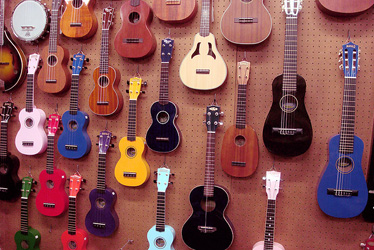
The ukulele is normally related with music from Hawaii where the name generally deciphers as "hopping flea" perhaps in light of the development of the player's fingers. Legend credits it to the moniker of the Englishman Edward William Purvis, one of King Kalakaua's officials, on account of his little size, uneasy way, and playing aptitude. Probably the most punctual appearance of the word ukulele in print (in the feeling of a stringed instrument) is in the Metropolitan Museum of Art's Catalogue of the Crosby Brown Collection of Musical Instruments of All Nations published in 1907. The inventory portrays two ukuleles from Hawaii: one that is comparable in size to an advanced soprano ukulele, and one that is like a tenor (see § Types and sizes).

Created during the 1880s, the ukulele depends on a few little guitar-like instruments of Portuguese starting point, the machete, the cavaquinho, the timple, and the rajão, acquainted with the Hawaiian Islands by Portuguese immigrants from Madeira and Cape Verde. Three outsiders in particular, Madeiran cabinet creators Manuel Nunes, José do Espírito Santo, and Augusto Dias, are by and large credited as the main ukulele makers. Two weeks after they landed from the SS Ravenscrag in late August 1879, the Hawaiian Gazette reported that "Madeira Islanders as of late showed up here, have been pleasing individuals with daily road shows."
Perhaps the main factors in building up the ukulele in Hawaiian music and culture was the fervent help and advancement of the instrument by King Kalakaua. A benefactor of human expressions, he consolidated it into exhibitions at regal social occasions. Its certainly comes in the rundown of things with benefits.